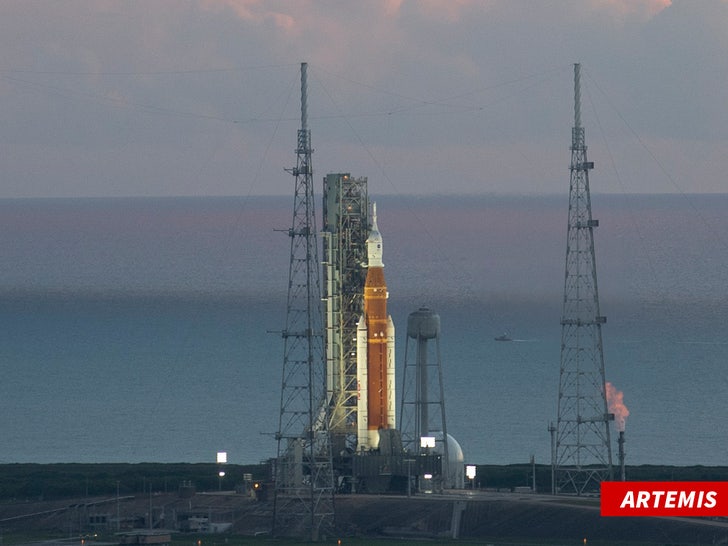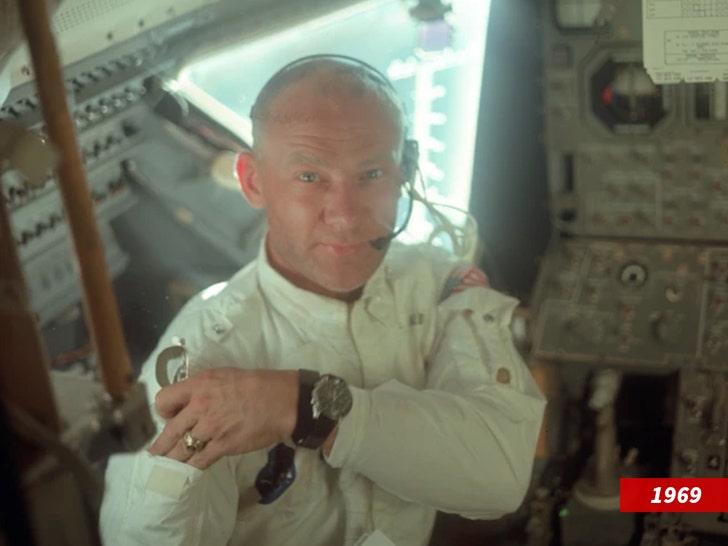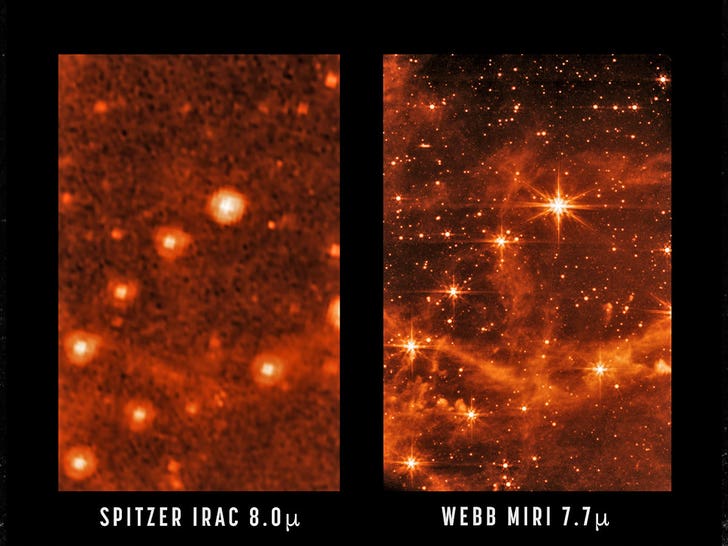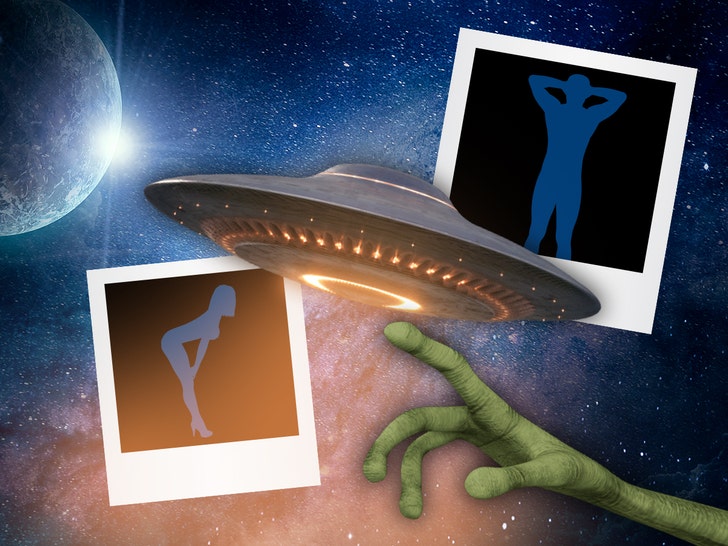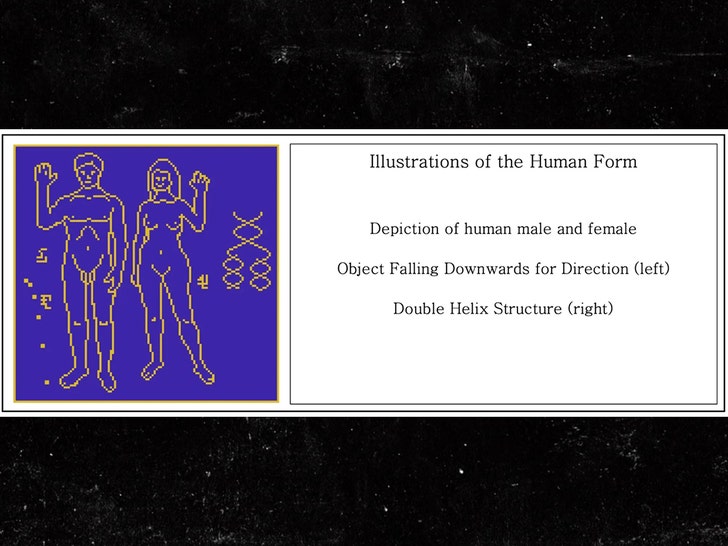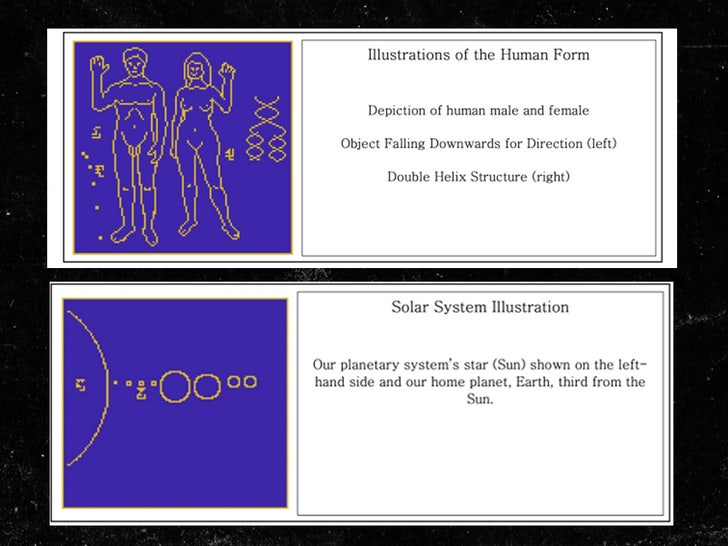Neil deGrasse Tyson Elon Musk's Our Thomas Edison!!!
-
Exclusive
- 886 shares

Neil deGrasse Tyson is one of the smartest guys out there, and he's now weighed in on who he thinks is one of the world's great visionaries ... and he's squarely Team Musk.
We got Neil at the Reagan National Airport Friday, where he compared the Tesla honcho to perhaps the most imaginative person in the history of our country -- Thomas Edison.
Mind you ... Neil doesn't co-sign on every one of Elon's ideas. In fact, he thinks some are pie in the sky, but he says Elon dreams big, and that's when big things are bound to happen.

Tyson also has words for the place we call home ... AKA a "f***ed up" planet. He does, however, think there's a ray of hope with NASA's recent mission crashing into an asteroid.
Neil grouses ... if only dinosaurs had a little vision, they might be alive today.
And, that's a good thing?
related articles
NASA's DART Mission Nailed Asteroid 6 Million Miles Away ... NASA Amazed by Up Close View!!!
-
Exclusive
- 257 shares

NASA is over the moon about the success of its DART mission ... something the director of the whole operation sees as the beginning of a new era for humankind.
Dr. Lori Glaze, the Director of NASA's Planetary Science Division, joined "TMZ Live" to talk about DART -- an explosive dry run, if you will, at protecting Earth by crashing spacecrafts into potentially dangerous asteroids.

Dr. Glaze says her whole team was really confident the spacecraft would hit its target, but seeing it all up close -- in high definition, no less -- was an experience like no other.
You gotta see the excitement over just how much they were able to make out on the asteroid's surface!
As we told you, NASA successfully carried out its $325M DART mission Monday evening during a live broadcast.

To put the achievement in perspective ... Dr. Glaze says the football stadium-sized asteroid was about 6 million miles away, and the spacecraft was comparable to a vending machine -- and they absolutely nailed it.
Going forward, she says the hope is they've discovered a way to deflect any future asteroids that might cross paths with our planet. Dr. Glaze says they're already taking measurements to see how effective the DART mission really was.

Don't worry ... the folks over at NASA took some time to celebrate such a big W and we hear it was out of this world!
related articles
NASA's DART Mission Spacecraft Smacks Into Asteroid ... In Planetary Defense Test

Asteroids, you have a problem ... humans!!!
NASA just successfully tested a new way to defend Earth from potentially dangerous asteroids ... by crashing a spacecraft into a floating space rock.
The space agency carried out its $325 million DART mission Monday in the final frontier, with a space probe purposefully colliding with an asteroid to send it in a different direction.
The mission was broadcast live across the globe, there were cameras on the front of the probe as it crashed into the asteroid, and mission control went bonkers when the probe successfully made impact, redirecting the asteroid.
NASA's DART probe -- an acronym for Double Asteroid Redirection Test -- is being tested to see just how much a spacecraft can alter an asteroid's trajectory simply by crashing into the darn thing. Only humans could dream this up.
The test of the futuristic planetary defense technology was carried out on a harmless asteroid, Dimorphos, some 6.8 million miles from Earth.
In the "fishbowl" watching for #DART to impact Dimorphos and give it a nudge! pic.twitter.com/ubMjxQAnG9
— Bill Nye (@BillNye) September 26, 2022 @BillNye
Meanwhile, at mission control, Bill Nye was watching in real-time.

Asteroids have officially been warned ... don't mess with Earth!!!
related articles
Neptune's Rings Crystal Clear Shot Of The Ice Giant ... Best View in Decades!!!
NASA's James Webb Space Telescope is giving the younger generation something they've probably never seen before -- an extremely detailed look at Neptune and its rings, which hasn't been captured this clearly in over 3 decades.
NASA released the high-res snapshot of the ice giant Wednesday ... showing off a crisp view of the planet's multiple rings -- and even its faint dust bands, too.
Some of the rings haven't been spotted since Voyager 2 first observed Neptune in 1989. Shining bright above the planet is Triton, one of Neptune's 14 known moons.
Heidi Hammel, a Neptune system expert and scientist for Webb, says this isn't just breaking ground for the visual of the rings -- "this is the first time we've seen them in infrared."
In fact, the infrared cameras are the exact reason why the planet isn't coming up blue in the pics -- looking a little different to die-hard fans of our Solar System's 8th planet.
This telescope is no joke -- as we reported, it's been giving us great looks at our universe and beyond this year. NASA showed off its capabilities in true form in July, giving everyone a clear view of the Southern Ring planetary nebula (NGC 3132) and its two stars.
We also got a look at 5 galaxies known as Stephan’s Quintet, which NASA describes as colliding galaxies that are "pulling and stretching each other in a gravitational dance."
Cool.
related articles
Jack Osbourne The Govt. Won't Tell Us The Truth About UFOs ... I'm Looking Into It!!!
-
Exclusive
- 5.2K shares

Jack Osbourne says we might not know everything about UFOs, but the government sure does ... and now he's taking matters into his own hands to get the real lowdown.
Jack joined TMZ Live and talked about his upcoming TV special, "Jack Osbourne's Night Of Terror: UFOs" ... and shared his outta-this-world thoughts about life on other planets.
Jack says writing off the idea of UFOs, aliens or any kind of life outside of planet earth is incredibly ignorant. He says this type of research is really important ... and he could be onto something.
Just last week, Congress confirmed some UFOs are not "man-made" and could potentially pose a threat. The confirmation was buried inside a U.S. congressional report, and Jack feels there's so much more info the government isn't telling us.

Jack seemed almost certain some folks in Congress might know exactly what these objects are and where they come from ... but they are bread-crumbing Americans with that info.

Congressman Eric Swalwell Wants to End Pentagon Retribution Over UFOs
His reason on why the Prez isn't fessing up to knowing about UFOs is pretty interesting ... though he says some past presidents have dropped hints. Now he's taking his own closer look at strange going-ons at a popular landing spot for UFO sightings over the years.
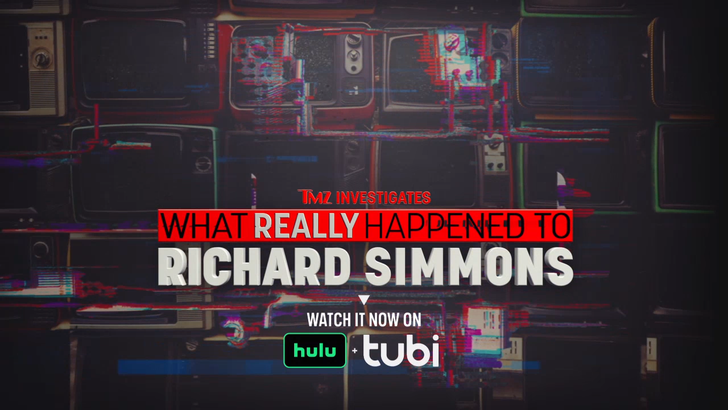
"Jack Osbourne's Night Of Terror: UFOs” premieres Saturday on Discovery+.
related articles
NASA Moon Launch Rocket Launch Scrubbed ... Fuel Leak, Weather-Related Problems
 8/29/22
8/29/22
NASA's groundbreaking rocket launch was scrubbed Monday after a slew of mechanical and weather-related issues.
So much is riding on the massive Artemis 1 mission ... it's the first launch of the massive, most powerful rocket ever ... it's an unmanned flight that will circle the moon and forge a path for astronauts to revisit the astronomical body in 2024 or 2025.
The flight was postponed due to an offshore thunderstorm, but then a fuel leak and other problems dogged mission control at the Kennedy Space Center.
There have been problems with the rollup to the launch all weekend ... 5 lightning bolts struck towers near the rocket, although the rocket was never hit or affected.
The endgame is to build and send up a space station near the moon, where astronauts can live and regularly visit the satellite planet. Eventually, the space station will be a stopping off point for missions to Mars.
The first set of astronauts to visit space will include the first woman ever to step foot on the moon.
Monday's mission had 2 mannequins in the Orion capsule -- Helga and Zohar -- which contained fake female organs ... designed to test the effects of space radiation on women.

The next attempt to launch the rocket could be Friday.
related articles
China Rocket Debris Expected To Rain Down On Earth ... AGAIN!!!
Hey, look up in the sky ... it's a bird, it's a plane ... no, it's another Chinese rocket crashing to Earth.
That's right. China, it seems, is about to do it again with its disastrous space program expected to rain debris down on our planet -- possibly as soon as Saturday, some experts warn.
Our latest prediction for #CZ5B rocket body reentry is:
— The Aerospace Corporation (@AerospaceCorp) July 26, 2022 @AerospaceCorp
🚀 31 Jul 2022 07:52 UTC ± 22 hours
Reentry will be along one of the ground tracks shown here. It is still too early to determine a meaningful debris footprint. Follow this page for updates: https://t.co/SxrMtcJnj0 pic.twitter.com/xsDqC8rOEt
China reportedly launched the 23-ton spacecraft, dubbed the Long March 5B, earlier this week and it's supposed to make an uncontrolled re-entry somewhere in the world, but no one knows where, making people even more nervous.
Of course, China's space program is crashing and burning of late ... the most recent example was Wednesday when a cargo spacecraft mostly evaporated due to massive heat as it reentered the atmosphere.
All that was left of the Tianzhou-3 ship were small pieces that luckily didn't hit anyone on land, but, instead, dropped in a predetermined area of the South Pacific, according to the China Manned Space Agency.
The cargo ship serviced China's orbiting space station and had been docked there until July 17 as the country tries to make the artificial satellite fully operational.
🇨🇳 Debris of the Chinese Rocket over the Dead Sea, 🇯🇴 Jordan, the lowest point on Earth @ 03:16 UTC GMT#Jordan/#China pic.twitter.com/0AaMEzLYhc
— 🆁🅰🅶🅴🆇 (@theragex) May 9, 2021 @theragex
The mishap follows 2 other incidents that clearly underscore China's struggles with space exploration. Back in May 2021, debris from a Chinese rocket dropped from the sky into the Indian Ocean. A year earlier, metallic objects from another Chinese spacecraft showered villages in the Ivory Coast, but, thankfully, no one was injured.
China's space program is operated by the People's Liberation Army, which is the ruling Communist Party's military wing. Because of the country's military link, the U.S. has excluded China from the International Space Station.
related articles
Buzz Aldrin Apollo 11 Jacket Sells For $2.7 Mil ... Space Artifact Record!!!
Buzz Aldrin's jacket from the historic Apollo 11 mission to the moon just sold at auction ... and it set a record for American space-flown memorabilia.
The history-making piece of flight gear, which Buzz wore on NASA's 1969 mission to the moon and back, sold to an unidentified buyer for $2,772,500.
Sotheby's, which auctioned off the jacket and a bunch of other Aldrin space memorabilia, says Buzz's Teflon-coated jacket is the most valuable American artifact flown in outer space.
Buzz didn't wear the jacket when he was walking around on the moon's surface, he was in his spacesuit for that part of the mission, but he actually spent more time in the jacket than anything else during the Apollo 11 mission.
Aldrin says he wore the jacket in the NASA spacecraft for 3 days on the way to the moon, plus another 3 days on the way back to Earth.
As you can see, the white jacket features Buzz's name tag -- his first name is Edwin, hence the "E" -- above the Apollo 11 mission emblem ... and there's an American flag on the left shoulder.
related articles
Astronaut Mike Massimino Webb Telescope More Than Pretty Pics ... Might Show Birth of the Universe!!!
-
Exclusive
- 485 shares

NASA's very high hopes for the James Webb Telescope go way beyond those stunning, out-of-this-world images you've seen -- astronaut Mike Massimino says it could literally redefine the universe for us.
Mike joined TMZ live Tuesday, shortly after NASA released even more impressive photos of galaxies and stars forming billions of light-years away from Earth. He says scientists hope the telescope will achieve 2 major goals.

The first is trying to look back into stellar history as far as possible -- about 13.8 billion years ago -- to see the very first light created at the moment of the Big Bang!!! Meaning, it would no longer just be theory.
Mind-blowing, right???
Mike says the J-dub Telescope could also help us find other habitable planets. Now, he says there's no need to pack your bags -- we won't be able to hop on one of Elon Musk's rockets to get there, even IF we find such a planet.
As we've told you, NASA released 4 new shockingly clear space images Tuesday, after unveiling an initial image on Monday ... which the space agency called "the deepest, sharpest infrared image of the universe ever."
Waiting for your permission to load the Instagram Media.
As for the whole Big Bang Theory (actual science, not a TV sitcom) ... we had to ask Mike how the telescope's findings might challenge some people's view of religion. Having been in space himself, he had a very interesting take on that huge question.
related articles
NASA Reveals More Incredible Pics from Space Thanks to Webb Telescope
NASA's James Webb Telescope continues to stun our world with images of galaxies and stars from billions of light-years away ... just releasing a new set of pics that look like they're straight out of a sci-fi movie.
On Tuesday, viewers got a look at the Southern Ring planetary nebula (NGC 3132) and its two stars. It's truly incredible how clear and defined the images of the two stars are ... some of the first of their kind.
The new images weren't just a showcase of NGC 3132, though, we also got a look at five galaxies known as Stephan’s Quintet, which NASA describes as, "These colliding galaxies are pulling and stretching each other in a gravitational dance."
Waiting for your permission to load the Instagram Media.
The Carina Nebula was Tuesday's "Grand Finale" for the Webb images ... NASA says, "Webb’s new view gives us a rare peek into stars in their earliest, rapid stages of formation. For an individual star, this period only lasts about 50,000 to 100,000 years."

Of course, Monday's sneak peek from NASA of what is "The deepest, sharpest infrared image of the universe ever." promised to deliver ... and it certainly already has.
Waiting for your permission to load the Instagram Media.
Webb is a collab between NASA, the European Space Agency and the Canadian Space Agency.
related articles
Supermassive Black Hole Comes To the Light!!! Insane Photo Shows Massive Image at Galaxy's Center
This is incredible ... a black hole smack in the middle of our Milky Way galaxy that is 4.3 MILLION times the mass of the sun!!!
The image was captured by The Event Horizon Telescope Group. Now get this -- it's located 27,000 light-years from planet Earth. Put another way ... as enormous as this hole is ... when you look up in the sky with a naked eye, it looks about as big as a donut on the moon. Wrap your head around that!!!
The hole is at the center of our galaxy and near the constellation Sagittarius. It is, indeed, supermassive. You want your mind blown again ... its mass is equal to 4 million suns!!!
It's being described as "the glue that holds the galaxy together." As for how black holes are created ... it's when a gravitational pull is so intense nothing -- even light -- can escape.
This image was released days after NASA showed off super clear images of stars ... courtesy of the James Webb Space Telescope.
The $10 billion telescope is just beginning its work, which should unlock some of the mysteries of our universe.
Brave new world -- and universe -- here we come!!!
related articles
NASA James Webb Space Telescope Counts Our Lucky Stars!!! Shockingly Clear, New Images
NASA is giving us a gleaming look at the stars ... releasing shockingly sharp images courtesy of the James Webb Space Telescope.
NASA officials breathed a sigh of relief Monday, saying the telescope's optical alignment was "perfect" ... allowing them to capture a crystal clear view of our galaxy and beyond.
Michael McElwain, a scientist at NASA, gushed ... "I'm delighted to report that the telescope alignment has been completed with performance even better than we had anticipated".
The images were a test, to make sure the $10 billion telescope was working properly.
NASA's goal is to study how stars were created and investigate other objects in the solar system ... in hopes of figuring out how the first stars and galaxies formed.
The image on the left shows a view of the now-retired Spitzer Space telescope and the image on the right displays the improved images from the Webb Space Telescope.
Scientists say, this is only the beginning of what Webb will do in the coming years.
Brave new world.
related articles
Nudes in space NASA Hoping to grab aliens' attention ... By Using Drawings Of Naked Humans
E.T. might want to phone home after this one ... scientists are looking to finally get a response back from alien life by sending some cheeky sketches into the unknown.
As we reported, NASA's new project, "Beacon in the Galaxy," is hoping the messages they transmit into space will result in some contact back. One of the things being sent is a nude drawing of a man and a woman ... before your imagination runs awry, take a look for yourself.
Scientists hope the simple sketch of 2 naked humans waving "hello" will attract whatever's out there ... it also comes with a drawing of DNA and a representation of gravity.
This isn't the first time nude drawings have been floating in space ... plaques on Pioneer missions 10 and 11 have similar sketches attached to their space crafts.
The string of messages will be sent out in binary code and will include some basic math and physics concepts that can help establish their level of communication.
NASA's looking for success in project BITG ... hopefully, whatever's out there will stop ghosting us and finally swipe right.
related articles
SpaceX Sends 1st Black Woman to Space ... For Extended Period

Elon Musk's making more history -- SpaceX just sent the first Black woman to the International Space Station for an extended period of time.
Jessica Watkins is one of four astronauts who were hurled into orbit early Wednesday morning -- part of a mission called Crew-4, which was using yet another Dragon rocket to make their daylong ascent.
The team went up around 1 AM PT, and they're expected to dock at the ISS later today, at about 5 PM PT. Crew-4 will stay up there for 5 months, before returning in September.
Like we said ... Watkins is the 1st woman of color who'll have been in space for an extended period of time. Guion Bluford was the first Black person to go up into space, period, back in 1983 -- and since then, more than a dozen African-Americans, in general, have gone up.
Now, as for what they're going to be doing at the ISS ... general upkeep, maintenance and research -- something the previous team, Crew-3, has been doing since November. They're all doing a bit of a trade-off here, and Crew-3 will come back home after Crew-4 settles in.
In the past 2 years -- after SpaceX landed a major contract with NASA -- Elon has sent up 26 people into orbit in what are now seemingly just run-of-the-mill trips into space. That's actually a good thing, because as you know ... EM seems to think the future is up there.
He's said he wants to eventually colonize Mars, so the more we're up in our galaxy ... presumably, that's for the better -- as we can then start inching our way further out.
Of course, there's a commercial aspect too. SpaceX, much like Blue Origin, has started selling private seats for private flights ... so space travel is becoming the norm now, it seems.
related articles
Alien Life Is There Anybody Out There?!? Scientists Sending New Message to Space
If alien life is out there in this great, big universe, we're doing our best to reach it with a new message -- and this time, it's got some algebra attached. Just in case they're big on math.
NASA is partnering with some of the country's top scientific minds in hopes of broadcasting a new radio message via a high-tech telescope -- very similar to what we did in 1974 from a telescope in Puerto Rico (then called the "Arecibo").
Not to get all math-y on ya, but that message to the stars only included binary code, plus some images of our Solar System and DNA sequences. This time, we're calling it the Beacon in the Galaxy message -- and we're kicking things up a notch by transmitting math equations.
There will be other graphical information communicating some basic principles and features of our world ... including cosmic landmarks that could help aliens find Earth in the Milky Way.
Sounds neat, of course, especially if some E.T.s actually pick up our signal and respond -- but this sort of reaching out actually spurred a warning from the late, great Stephen Hawking ... who once said we should refrain from chatting, and to do more listening instead.
The reason -- he said not all potential alien life might come in peace, and if they're able to receive what we send, they can presumably come down here and do major damage with way more advanced tech than we have.
Welp ... we're rolling the dice. Aliens, here we come!!!
related articles
'Odd Radio Circles' Spotted In Outer Space ... Baffling Scientists
The mysteries of space are offering up a new phenomenon to the list ... astronomers have documented something called 'odd radio circles' ... and there's lots of head-scratching going on.
These ORCs were first discovered by astronomers in 2020, using the Australian SKA Pathfinder telescope ... operated by Australia's national science agency, CSIRO.
Amazing animation of Odd Radio Circles (ORCs) via SARAO pic.twitter.com/8FMmMk4loG
— Kelly Kizer Whitt (@Astronomommy) March 22, 2022 @Astronomommy
The Commonwealth Scientific and Industrial Research Org believes something like this takes a billion years to end up at its max size, and stretches about 16 times bigger than the Milky Way. It's already expanded past multiple galaxies.
The South African Radio Astronomy Observatory's MeerKAT telescope was able to get an even better shot.
Researchers have a few theories ... it's either the aftermath of an explosion at the center of the galaxy, jets that push out energetic particles, or the result of a starburst shock wave, caused by the creation of new stars.
Ray Norris, a professor at the Western Sydney University and CSIRO, says "We know ORCs are rings of faint radio emissions surrounding a galaxy with a highly active black hole at its center, but we don't yet know what causes them, or why they are so rare."
So far, only 5 odd radio circles have been spotted, all by telescopes that observe through radio wavelengths. Visible light, infrared and X-ray telescopes have yet to document the ORCs.













